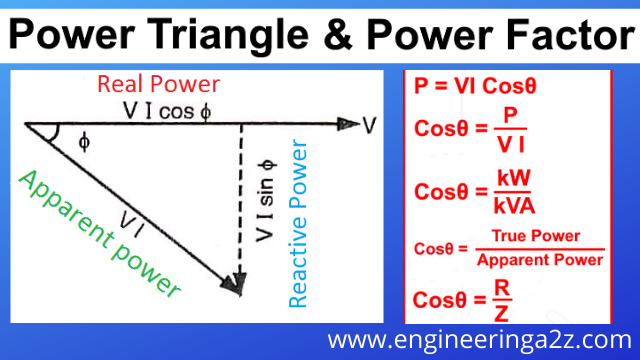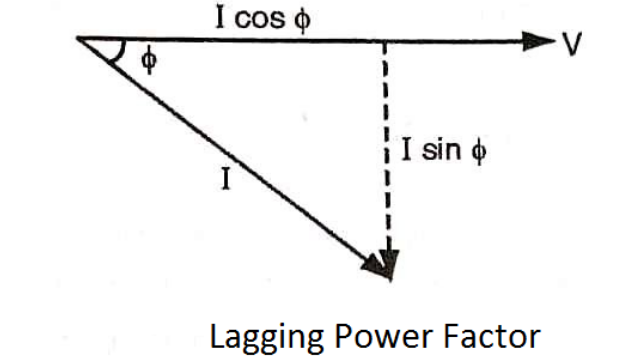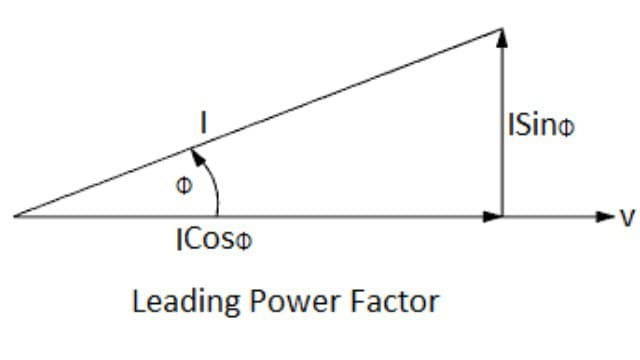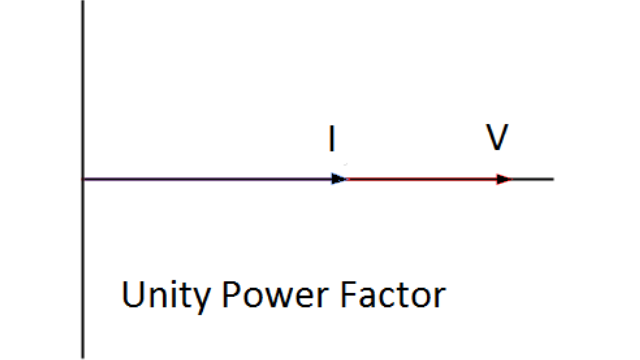
Table of Contents
- Concept of Power Factor
- Reasons and disadvantages of low power factor
- Importance of Power factor improvement
Introduction of power factor
As we know that the electrical energy is generated, transmitted and distributed extensively in the form of alternating current. In the alternating current there is on factor which is called Power factor that plays an important role in the alternating current. Most of electrical loads are inductive. e.g. Induction motor, induction furnaces and lamps. These loads have low power factor. This low power factor increases the power ratings of all the power system equipment and also lower the efficiency..
What is Power Factor
The cosine of the angle between voltage and current in AC system is called power factor.
Power factor unit is unitless.
For the inductive load, the current lags the voltage by some angle, say ϕ then the power factor is called lagging power factor. The resulting current phase angle is negative in relation to the driving voltage phase angle.

For the capacitive load, the current leads the voltage by some angle, then the power factor is called leading power factor. The resulting current phase angle is positive in relation to the driving voltage phase angle.

For the resistive load , the current and voltage are in the same then the power factor is called unity power factor.

Power Triangle
The fig. shows a phasor diagram for an inductive load, Here voltage, V is taken as reference vector and current I lags the voltage by an angle ϕ. The horizontal component of current I cosϕ (known as active component of current) is in phase with the voltage whereas the vertical component of current I sinϕ (known as reactive component of current ) is perpendicular to the voltage vector. If all the three sides are multiplied by voltage V, Then a power triangle is obtained.
VI cosϕ is called real/true power in kW or W.
VI sinϕ is reactive power in kVAR or VA.
VI is apparent power in kVA or VA.

The ratio of true power to the apparent power is called power factor.
Disadvantage Of Low Power Factor
As we know that power consumed in single phase AC circuit is
P=VI cosϕ

But power consumed in three phase AC circuit is

From above equation we see that for a fixed value of power and voltage , the load current are inversely proportional to the power factor, Lower the power factor higher the value of current and vice versa. The higher current results in following disadvantages..
- Greater conductor size : To transmit or distribute a fixed amount of power at a fixed voltage at low power factor, the conductor will have to carry large amount of current which will necessitate a large conductor size.
- Large copper loss : Due to more current in the conductor the copper losses(I^2R )are increased which result in poor efficiency.
- Poor voltage regulation : Due to increase in current the voltage in the electrical equipment drops more which result in poor voltage regulation.
- Large kVA rating of the equipment : The rating of the equipment is inversely proportional to the power factor. Hence at low power factor ,the value of kVA will increase..

Reason/Cause Of Low Power Factor
The following are the main causes of low power factor
1. Transformers and chokes are the inductive devices which causes lagging power factor due to which the current to lag behind the voltage. However, at normal loads, the magnetizing current does not effect too much but at low loads or light loads the magnetizing current effects too much and lowers the power factor.
2. The motors which we use in our industry are mostly induction motors i.e. having inductive loads, which have low power factor. Normally, the power factor of induction motors vary from 0-8 to 0 85 when operating at full load and 0-3 to 0-5 when running lightly i.e. at small loads.
3. Arc lamps, heating furnaces also operate at a low power factor (lagging).
Importance Of Power Factor Improvement
The improvement of power factor plays a very important role for both i.e. consumer as well as generating station.
1. For consumer :A consumer has to pay the electricity charges on the basis of his maximum demand in kVA plus the units consumed. The kVA =kW/cosϕ. If the consumer improves the power factor, then there will be a reduction in his maximum kVA demand and consequently there will be annual saving of the consumer. There is no doubt that for power factor improvement, equipment involves extra money, yet improvement of power factor to a proper value results in the net annual saving for the consumer.
2.For generating stations: A generating station there is also need of power factor improvement because the generators in a power station are rated in kVA but their useful output depends upon kW output. Since output kW = KVA x cosϕ . The number of units supplied by the generators depend upon power factor. The higher the power factor of the generating station, the higher is the kWh, it delivers to the system. From this, it is concluded that improved power factor increases the earning capacity of the generating station.
Read Also
- Power Factor Meter | Dynamometer Type
- Power Factor Improvement Methods
- B.Tech – MDU Previous Year Question Papers Download






Leave a Reply